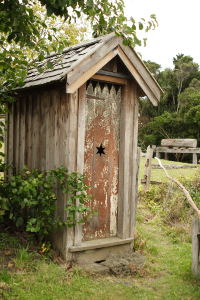 About 4,000 years ago, pipes were being fashioned to transport water from the ocean to the bathhouse.
About 4,000 years ago, pipes were being fashioned to transport water from the ocean to the bathhouse.
Yep, 4,000 years. The early plumber’s lineage dates back much farther than the names of the western sanitary pioneers. Long before England was ever thinking about toilets, or running water, the Romans were creating their own sewage systems. Their systems were so vast and complex that today, we still wonder at their knowledge and abilities. Today, we’re going to explore the types of plumbing these early settlers of the plumbing frontier braved. These brave men and women set the standard for excellent plumbing. That same standard is still being used today at your local plumber’s office, and even your own home.
The First Toilet
In the early years, (And we mean the really early years) the first flushing “water closet” was located in a designated area for it within the structure of the Minoan Palace of Knossos on the isle of Crete. This was about 1700 BC. At that time, this palace featured four separate drainage systems that emptied into the sewers constructed of stone created strategically around the palace. This was the first known prototype for the modern toilet that we’ve uncovered. It took several thousand years for others to discover it under the flood damage and rubble caused by the decay, but nonetheless, it existed long before our western ideas of sanitation made their entrance into our then, somewhat less sanitary lives.
The First Running Water Bath
One of the first (if not the first) running water baths were constructed by the Romans in about 50 AD. Although the early pipe construction was generally weaved with wood and earthenware, the later developments to the pipe system included lead. The Latin term “plumbus” means “lead”, which was the main ingredient to the construction of the pipes of antiquity.
Running hot and cold water were not uncommon in early Greece. Although the men of the time thought it unmanly to wash in warm water, the capabilities were ours long before we thought they were.
Bathing Extravagance in Rome
The Romans had a much different view than the stalwart Greek Spartans. They liberally used their hot water, both day and night as a means of comfort, relaxation, as well as bathing. But they didn’t just bath like most of us do. No, bathing was almost a ceremony. Now granted, those with access to these baths were wealthy, but the point still remains that bathers of centuries past took it rather seriously.
The baths of the Diocletian, which seated over 3,000 people, featured stupidly expensive (and awesome) aqueducts that replenished the supply of water in the thermae, or bath, constructed with imperial importance and magnificence. The construction was nothing short of royal, and the plumbing system, for the time was simply magnificent. The early years of the plumbing industry were fantastic to say the least.